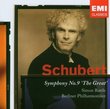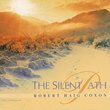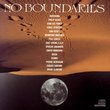| All Artists: Edvard Grieg, Carl Nielsen, Jean Sibelius, Emerson String Quartet, Philip Setzer, Eugene Drucker, Lawrence Dutton, David Finckel Title: Intimate Voices Members Wishing: 0 Total Copies: 0 Label: Deutsche Grammophon Original Release Date: 1/1/2006 Re-Release Date: 4/11/2006 Genres: New Age, Classical Styles: Meditation, Chamber Music, Historical Periods, Classical (c.1770-1830) Number of Discs: 1 SwapaCD Credits: 1 UPC: 028947759607 |
Search - Edvard Grieg, Carl Nielsen, Jean Sibelius :: Intimate Voices
 | Edvard Grieg, Carl Nielsen, Jean Sibelius Intimate Voices Genres: New Age, Classical
Both Grieg and Sibelius composed only one string quartet; along with these, this recording features a brief work by Carl Nielsen entitled "At the Bier of a Young Artist." The Nielsen was originally a more elaborately score... more » |
CD DetailsSynopsis
Amazon.com Both Grieg and Sibelius composed only one string quartet; along with these, this recording features a brief work by Carl Nielsen entitled "At the Bier of a Young Artist." The Nielsen was originally a more elaborately scored work, but the Emersons have successfully reduced it. It's a fine study in dark, sentimental Romanticism. The Grieg is an easier-going piece than one might imagine given its minor key tonality, with plenty of melodies, a lovely dance in the second movement and a livelier one in the finale. The Emersons play it crisply, perhaps purposely avoiding its gloom. The D minor Sibelius Quartet is a joyless piece, anxious when it isn't disturbingly dark, and it is played beautifully, with proper gravity, by the Quartet. A handsome disc. --Robert Levine Similarly Requested CDs
|
CD ReviewsBeautiful Scandinavian Gems - Masterpieces of Chamber Music Classicalfan | Reston, VA USA | 07/09/2006 (5 out of 5 stars) "The Emerson String Quartet ("ESQ") brings elegance, grace, smoothness, flair and fire to these two string quartets, both of which are masterpieces of chamber music. The ESQ, now playing together for over 20 years, deliver a seamless and superlative performance with a very clear sound that gives immediacy to the beautiful passages in these string quartets. This CD is just as powerful and moving as the ESQ's earlier, 1986 recording of Dvorak's American Quartet, Tchaikovsky's First Quartet, and Borodin's Second Quartet, even though these two string quartets are not nearly as well known. These two works radiate with passion, energy, beauty, and lyricism. The Grieg string quartet has not only lyricism but urgency, depth, and intensity. In fact, this quartet, especially the first movement, is refreshingly different from what is often associated with the sound of Grieg, whose music, Debussy once stated, sounded to him like "bon bons wrapped in snow." The thickly chordal, almost orchestral sonorities of the Grieg quartet shine in the hands of the ESQ, who make the most of the changing moods of this piece, alternating between its feelings of tension, lyricism, and spirited energy. The last movement in particular is an infectious virtuoso dance. The sudden stops and starts of the Grieg quartet, which caused controversy and negative commentary when the work was first premiered, are dramatic, invigorating, and performed with flawless precision. The slow second movement (Romanze: Andantino) has more of the graceful lyricism that Grieg admirers will be familiar with. Yet, even in this passage, there are sudden tempo changes and a taut excitement that alternates with a sweet, dancelike melody, giving this work a sense of drama. The Sibelius quartet has five movements and is also quite moving and powerful, ending with a passionate, fast-and-furious roller-coaster ride that is a breathtaking pleasure to listen to. The 3:42 composition by the Danish composer, Carl Nielsen (1865 - 1931), is beautiful and interesting. It was performed at Nielsen's funeral in the Copenhagen Cathedral, 21 years after he had composed it in honor of a deceased friend. The 3-page booklet essay is detailed and informative. I have listened to these beautiful Scandinavian gems several times and each time has been a delightful and stimulating experience. Very highly recommended. Total Playing Time = 63:41. " A Taste of the Nordic Spatial Sounds, Performed Immaculately Grady Harp | Los Angeles, CA United States | 08/05/2006 (5 out of 5 stars) "The Emerson String Quartet continues its fine reputation both on the concert stage and in the recording studio as evidenced in this creatively programmed music by Nordic composers. The concept is intelligent on many levels, not the least of which is the manner in which each of the three works compliments each other. Despite the prolific output of Sibelius he wrote only one string quartet and for many the work is too dark and difficult to call for further hearings. But in the capable hands of the Emerson Quartet the Sibelius is a haunting, moody, intensely absorbing work. In contrast to the Sibelius the, again, sole string quartet by Edvard Grieg is delicately rewarding, rich with well-developed melodic lines, and endlessly creative in moods and movements. The brief work by Carl Nielsen is far different from his symphonies and tone poems: this is a piece, readily accessible, with as penultimate a Romantic style as anything written in this period. The inner communication among the Emerson players is as sensitive as we are likely to hear. They make these relatively unknown works seem like standard repertoire, so assured are their performances. This is a CD of 'intimate voices' by composers well known in other areas of composition. It is a true find! Grady Harp, August 06 " Only one string quartet? E. Muehlhausen | 11/19/2006 (5 out of 5 stars) "Mr. Levine is sorely mistaken in the above review that Sibelius only wrote one string quartet. He wrote many, as can be discovered by a simple search on Amazon.
As for the music, this disc is among my favorites. The Grieg is exciting but doesn't reward multiple listenings as does the rest of the album. The Sibelius, in particular, is full of beauty and complexity to be uncovered with each revisitation. The movements are united in subtle ways that take familiarity to recognize. For instance, the close relationship between the main themes of the 3rd and 1st movements. Gorgeous." |

 Track Listings (10) - Disc #1
Track Listings (10) - Disc #1








